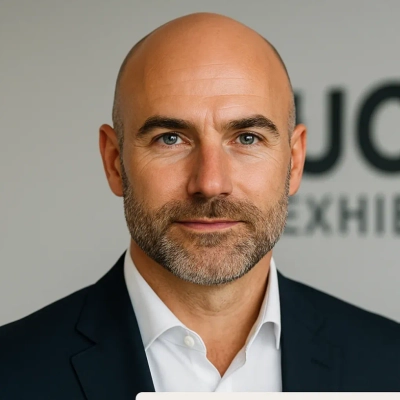8 Project Management Methods That Work Best – Advice From Experts
Project management methods can make or break a project’s success. This article presents insights from industry experts on effective project management techniques. From Agile to PRINCE2, discover which methods can best suit your project needs and boost efficiency.
- Agile Adapts to User Feedback
- Eisenhower Matrix Boosts Project Efficiency
- Hybrid Approach Balances Structure and Flexibility
- Critical Chain Optimizes Time and Resources
- Visual Kanban Board Reveals Project Friction
- Scrum Drives Consistent Project Success
- PRINCE2 Provides Structure for Complex Projects
- Goal-Driven Approach Simplifies Project Management
Agile Adapts to User Feedback
My favorite project management methodology has to be Agile, mainly because of its flexibility and adaptability. We used Agile when developing a new mobile app for our company, and it was a real success story. Instead of sticking to a rigid plan, we broke the project into smaller, manageable chunks and held regular check-ins to assess progress and make adjustments. This approach allowed us to quickly respond to user feedback and incorporate changes without derailing the entire project.
One specific example was when we realized halfway through development that users wanted a feature we hadn’t initially planned for. Thanks to Agile, we were able to pivot and integrate this feature seamlessly, which ultimately made the app more popular and user-friendly. In my opinion, Agile’s iterative nature and focus on collaboration were key to the project’s success, and it’s why I continue to favor it for managing complex projects.
 Travis Willis
Travis Willis
Director of Customer Success, Aspire
Eisenhower Matrix Boosts Project Efficiency
For years, I have used the Eisenhower Matrix as a real-time filtering system when leading fast-moving projects. I keep a grid on paper at my desk—Urgent vs. Important—and every task gets dropped into one of the four squares. During a nine-week operational reset with a team of twelve, we tracked roughly 90 incoming tasks per week. Each one was reviewed in a five-minute daily triage, sorted, and assigned. That small habit kept the work moving without letting the noise take over.
One square—the “Important but Not Urgent”—held most of the long-term drivers. Those tasks never got buried or skipped. We averaged a 32% drop in reactive work by the third week, which opened up space to move on the bigger goals that had stalled out. This method gave us traction without micromanaging. The clarity from a grid and a timer beat out any complex workflow software we had used before.
 Adam Klein
Adam Klein
Certified Integral Coach® and Managing Director, New Ventures West
Hybrid Approach Balances Structure and Flexibility
Using a hybrid approach that blends Waterfall and Agile has been my preferred approach, especially for projects in the manufacturing industry where structure and adaptability are both equally important.
For example, when I led the launch of a new product, I structured the project phases using Waterfall, which helped me establish clear requirements, secure resources, and define the roadmap. This gave my team and stakeholders confidence from the start.
In the conceptual design and testing phases, I shifted to Agile. My team worked in short cycles to design, manufacture and test prototypes, gather feedback from engineers and customers, and quickly make adjustments. This iterative approach helped us catch potential design and supply chain issues, and continually improve the product before full-scale production.
By mixing both methods, my team ended up with a smoother process, delivered a better product, and avoided costly rework in the future. The structure of Waterfall kept things organized at a high level, while Agile let us stay flexible when things needed to change during the project.
 Nikos Apergis
Nikos Apergis
Management Consultant, Alphacron
Critical Chain Optimizes Time and Resources
I would go with Critical Chain. It forces attention on time buffers and resource conflicts, which most teams ignore until they get burned. You strip the fluff, lock in deliverables around true constraints and suddenly the team moves like a single unit. When a task slips, it eats buffer, not the whole schedule. Using this, you can push a 5-week build into a 3.5-week window and still hit 95 percent of your deliverables.
To make it work, you need discipline. That means one shared task path, no multitasking, and a single chain of ownership from start to finish. It is lean but not chaotic, which means less backtracking, fewer excuses and clearer finish lines. If speed matters and you have overlapping dependencies, Critical Chain wins. If you need consensus or committees, forget it.
 Rick Newman
Rick Newman
CEO and Founder, UCON Exhibitions
Visual Kanban Board Reveals Project Friction
I lean into a modified Kanban system. I tape up projects on a board and move them through columns: To-Do, Stuck, In Progress, and Done. There’s no digital tracking, just sharp visuals. It works because you see friction quickly.
When the “Stuck” column gets heavy, you know where to step in. It’s less about structure and more about signal. The board keeps everyone honest and makes hidden tasks visible. Simplicity scales faster than templates ever will.
 Kiara DeWitt, RN, CPN
Kiara DeWitt, RN, CPN
Founder & CEO, Injectco
Scrum Drives Consistent Project Success
I rely heavily on Agile, particularly Scrum, and it’s not just a preference—it’s how we run nearly everything at our company. Whether we’re building software for healthcare, logistics, or finance, Scrum helps us keep things moving, clear, and collaborative.
What I like most about Scrum is the rhythm it brings. With sprints, stand-ups, and retros, everyone stays in sync. You’re not just chasing a deadline months away. You’re delivering something valuable every few weeks. That momentum is real, and teams feel it. Clients do, too.
Scrum also gives us room to adapt. Requirements change. Priorities shift. Sometimes, what a client wants on Day 1 isn’t what they need by Day 30. With Scrum, we’re not stuck in a fixed plan. We take feedback, adjust the scope, rework the backlog, and keep going. That level of flexibility has saved projects from going off-track more times than I can count.
I won’t name just one project, because honestly, this approach has become our baseline. Whether it’s a small MVP or a complex enterprise platform, we apply the same structure. At our company, we’ve worked with clients who had vague goals at the start, and within a few sprints, they were seeing real outputs and could shape the product as it grew. That kind of progress wouldn’t be possible if we waited to “get it all perfect” before starting development.
Of course, it’s not just about the process—it’s about the people. Scrum works best when teams are open, communicative, and proactive. And we try to build that culture across every engagement. The tools help, but it’s the mindset that really drives success.
So, Scrum is how we build, ship, and learn. It keeps us aligned internally and keeps our clients confident that things are on track. And projects rarely go sideways when you’ve got both of those working together.
 Bidhan Baruah
Bidhan Baruah
COO, Taazaa Inc
PRINCE2 Provides Structure for Complex Projects
At Parallel Project Training, where we train project professionals across a range of sectors in the UK, PRINCE2 often comes out on top, especially for teams working in complex environments like local government.
One example that stands out is a local authority team we trained ahead of a major infrastructure upgrade. There were many moving parts: multiple departments, external contractors, limited budget, and some shifting political priorities thrown into the mix. What made a real difference was giving the team the confidence and structure of PRINCE2 before the project even kicked off.
They used what they learned to set up clear governance, define roles properly, and build in stage controls that helped them stay on top of risks without getting buried in administrative tasks. From what they told us afterward, the training gave them a common language and framework that kept everyone aligned – even when things got a bit messy on the ground, as they always do.
PRINCE2 may not be the flashiest method, but in the right setting, especially where accountability and structure really matter, it gives teams exactly what they need to deliver with confidence.
 Felicity Scollan
Felicity Scollan
Project Management Training Consultant, Parallel Project Training
Goal-Driven Approach Simplifies Project Management
I believe in a very simple, outcome-driven approach to task management. First, I define a meaningful goal — something that matters in the real world, not just inside the codebase or product. Then I figure out the next concrete step that brings me closer to that goal. Not five steps. Not a three-month roadmap. Just one next task.
Then I (or someone on the team) do the task. After that, I ask two things:
1. Is the goal still valid?
2. Did I actually get closer to it?
If yes, I define the next step. If not, I adjust. And I repeat the cycle.
That’s it. It’s a loop of doing, evaluating, and adapting. All the rest — Scrum rituals, Kanban boards, planning meetings — are just tools to support that loop. If they help, great. If they get in the way, we reshape or drop them. The goal is never the ritual. The goal is the goal.
 Andrei Kvapil
Andrei Kvapil
CEO, AENIX INC







































